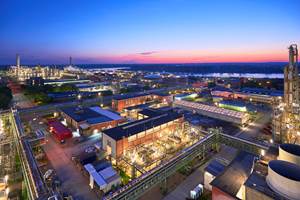Housing Weakens
Construction is growing but overall housing recovery still a ways off.
The total construction market, which includes residential and non-residential, private and public, improved significantly in the first quarter of 2014. The value of construction put in place grew by at least 7% compared with one year ago in each of the first three months of this year. This is nearly the fastest month-over-month growth in construction spending since the recovery in the market began in early 2012. Stronger monthly growth has led to accelerating growth in the annual rate of change in each of the last three months.
A good leading indicator for the total construction market is real consumer spending. In March 2014, real consumer spending increased by 2.9% compared with March 2013. This rate of growth is approaching the historical average for consumer spending (3.3%) for the first time since early 2011. While the gains are small, the annual rate of change in real consumer spending has been accelerating since September 2013.
Typically, changes in real consumer spending lead changes in real construction spending by a couple of months. And relatively small changes in consumer spending lead to noticeably larger changes in construction spending. The current trend in consumer spending indicates that construction spending should continue to grow at an accelerating rate for at least the next few months (see graph). The acceleration in construction spending will last even longer if consumer spending continues its accelerating growth. At the moment, this appears likely since real disposable income is growing faster than it has in some time.
While total construction spending is growing at an accelerating rate, the housing market is moving in the other direction. The housing market is still growing, but at a much slower rate. From August 2011 to July 2013, the month-over-month rate of growth in housing permits was well into double digits every month except two. But from August 2013 to March 2014, the month-over-month rate of growth in housing permits was in the single digits in five of the eight months. Therefore, the annual rate of change in housing permits has been cut in half.
Total household debt, which is made up mostly of mortgage debt, is still $700 billion below its peak in June 2008. Household debt as percent of GDP has fallen in almost every quarter since it peaked in the second quarter of 2009. These statistics would be even worse if it weren’t for the dramatic increase in student loan debt during this same period. In fact, in the former bubble markets, it has been large investment firms and hedge funds buying up residential properties to rent them that have played a primary role in the recovery of housing. Now, these firms are cutting back their purchases of real estate by up to 70%. Hence, prices in these markets are starting to fall once again.
Another concern regarding the housing market is that the growth is currently in homes with sale prices of more than $1 million. In March, purchases of homes in this price range increased by 7.8%. However, purchases of homes worth less than $250,000 declined by 12.0%. This isn’t too surprising when we consider the wealth of the upper income brackets has increased more than the bottom income brackets during this recovery.
The recovery in the housing market seems to have been driven by isolated actors instead of driven by broad-based action. Therefore, it is likely that housing market will continue to see decelerating growth, and perhaps contraction, until the underlying fundamentals of prices, incomes, and household formation reach a point that a broad-based recovery can begin.
Related Content
EV Chargers Made From Renewable PC
SABIC is enabling Charge Amps to manufacture electric vehicle (EV) chargers with a housing made from certified renewable PC, a first for the industry.
Read MoreArchitectural Mesh Made from Covestro’s Bioattributed PC
Kaynemaile’s new RE8 Architectural Mesh will deliver an ISCC Plus certified sustainable share of up to 88% of its architectural product.
Read MoreNova Makes Senior Leadership Changes
The company’s aim is to bolster sustainability ambitions
Read MoreIneos Nitriles Launches Biobased Acrylonitrile
The company’s Invireo is said to deliver a 90% lower carbon footprint compared to conventionally produced acrylonitrile.
Read MoreRead Next
See Recyclers Close the Loop on Trade Show Production Scrap at NPE2024
A collaboration between show organizer PLASTICS, recycler CPR and size reduction experts WEIMA and Conair recovered and recycled all production scrap at NPE2024.
Read MoreLead the Conversation, Change the Conversation
Coverage of single-use plastics can be both misleading and demoralizing. Here are 10 tips for changing the perception of the plastics industry at your company and in your community.
Read More
.JPG;width=70;height=70;mode=crop)




















